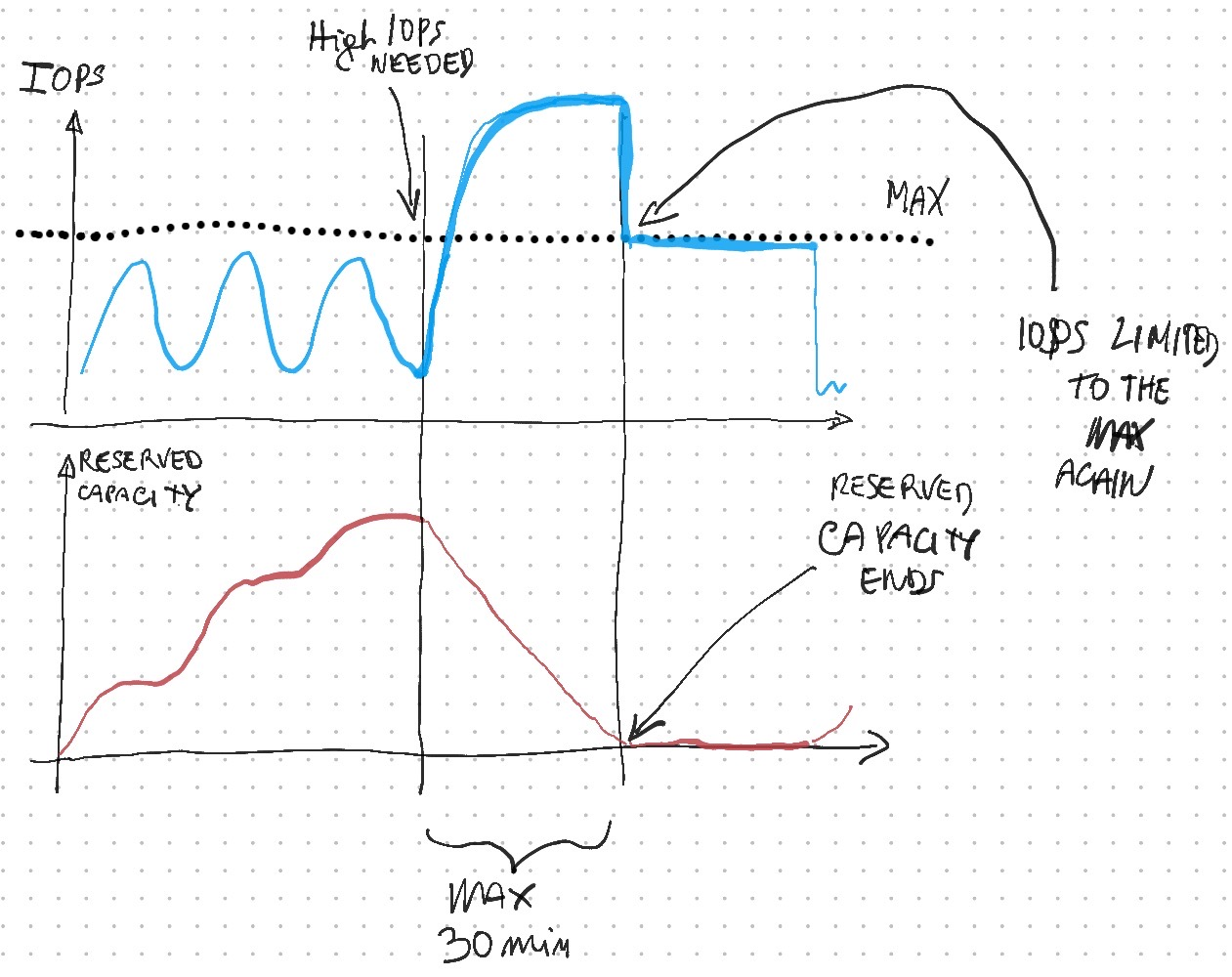Azure offers the ability to boost disk storage IOPS and MB/s (throughput) performance. Currently, there are two managed disk types that can burst, premium SSDs, and standard SSDs. Other disk types cannot currently burst.
Disk bursting can be credit based or on demand.
Credit based bursting
A burstable disk has for both IOPS and throughput, 2 values: max and bursting-max.
I.E. Azure Disk P1 have the following values:
- IOPS max: 120
- IOPS max with burst: 3500
- Throughput Max: 25Mb/sec
- Throughput Max with burst: 170Mb/s
during the disk usage, when the IOPS and throughput are below the max value, you earn credits you can use later. When a usage peak arrives, if you have credits, you can burst performance up to the max with burst value. During the burst the credits are used, so, when the credit finish or you have used the burst for 30 minutes in a day, the IOPS or the throughput are limited again to the max value.
30 minutes is a daily cap, you can use it consecutively or sporadically throughout the day.

This process is automatic and free of charge.
On demand bursting
You can activate and deactivate on-demand burst via powershell or AZ CLI. It hasn’t a time limit, but have a cost (monthly fee + hourly fee). Generally must be verified the convenience of on demand bursting vs a disk with better performances. On demand bursting is ok for short load peaks well defined in time.
Note that also Azure virtual machines have a max IOPS and max throughput, so during the bursting, the real speed achieved is the minimum between the machine and disk max value.
Burstable Virtual Machines
The concept of the burst can be applied also to Azure Virtual Machines. B-series machines have a base CPU performance and a max CPU performance. When the machine have CPU below the base value, collects credits to spend in performance bursts when necessary.
